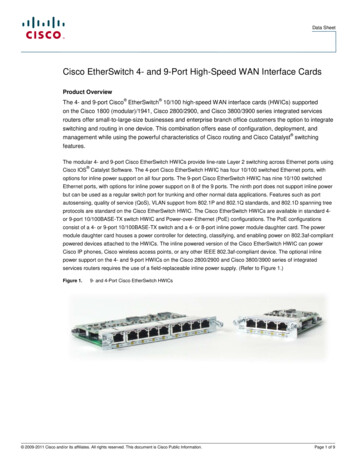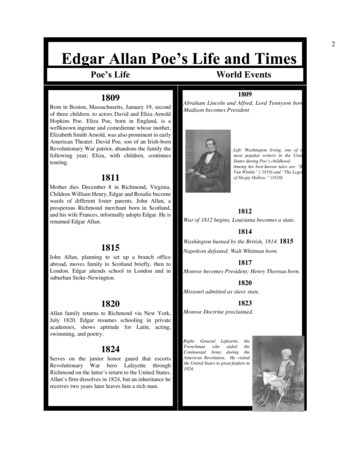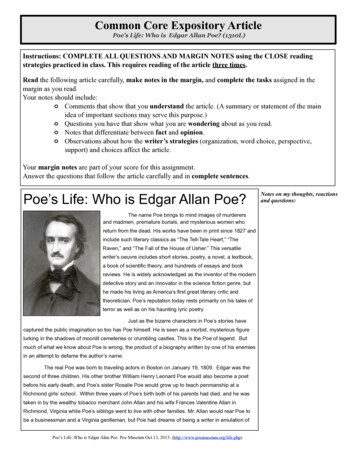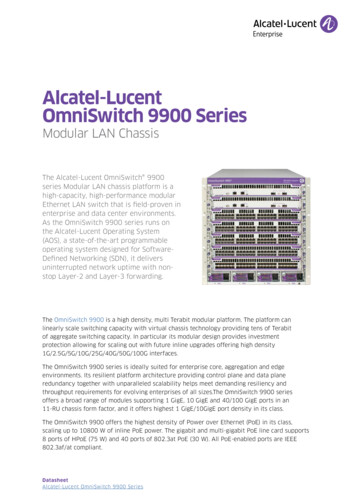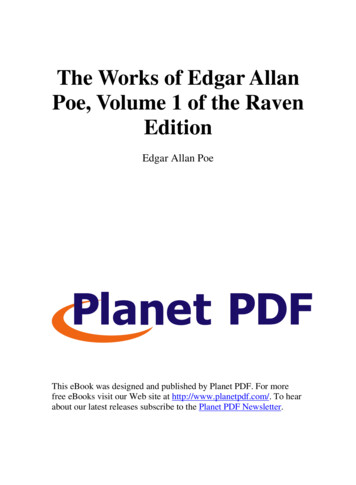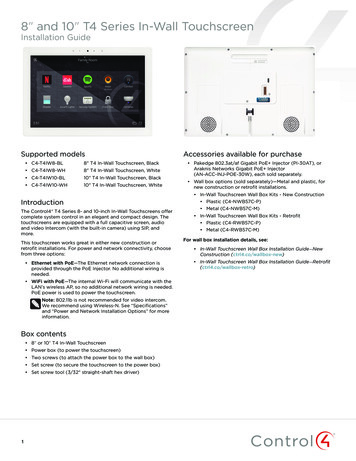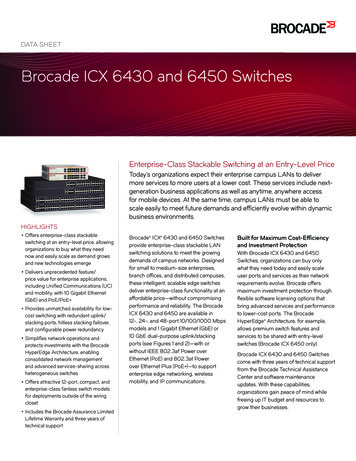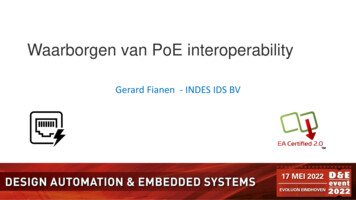
Transcription
Waarborgen van PoE interoperabilityGerard Fianen - INDES IDS BV
PoE is everywhere !-VoIP phonesSecurity camera’sWAN / Wifi Access pointsconnected lighting-Office lighting & Wifi / Smart buildingHospitality & HealthcareAudio, Video, Lighting networking for stages-Settop boxesTV’sActive Phased Array antennas for Satellite internet
PoE Systems and the IEEE PoE standardPSE Power Sourcing Equipment- Router / Switch- Injector- Security camera recorderPD Powered Device
Propriety PoE and Passive PoEPolycom, 3Com, Lucent, Nortel : Power-over-LANCisco : PoE with Cisco Discovery Protocol (CDP) and later UPOELineair Technology : LTPOE Passive PoE Propriety, not standardized.Polarity and voltages differ (9V to 48V)DC is ‘always-on’ !!No signaling or Power negotiationConfusing. Offered as PoE by brands like TP-link, MikroTik and Ubiquity
PoE - the IEEE Standard 802.3af PoESourcing to 15 Watt (2 wire-pairs) 802.3at PoE Sourcing to 30 Watt (2 wire-pairs) 802.3bt PoE Sourcing to 100 Watt (4 wire-pairs) Signaling & negotiation Backward compatible
PoE - the IEEE Standard
Ethernet interface & cable
2 wire and 4 wire PoE
PoE - Single signature vs Dual signature
PoE - more than just ‘put DC on ethernet wires’ No DC sourcing until after a verification Signaling / Power budget allocation by classificationJust imagine 24 port switches. (24 x 100W 2.400W!!)PD Classification : Pulses LLDP (Layer 2 Link Layer Discovery Protocol
Power is entirely managed by PSE’s : Discriminating Powered Devices from other devices that might be damaged if PoE voltages were appliedAssessing the basic power requirements of a newly connected PDSupporting surge (or inrush) power required to start up a PDConducting PoE link-layer (LLDP) mutual discovery and power negotiationSupporting spurious peak power demands from a PDReacting to PD’s that are drawing more power than they shouldSupporting surge power demands from a PD when PSE power sources are replaced by back-up powersources Supporting unbalanced load currents between pairsets when powering 4-pair to single signature PD’s Limiting maximum possible current in the event of short circuit in order to protect the PSE power supplyand to limit cable heating or sparking Reacting to PD’s that have been disconnected by removing power before another device can be pluggedinto the PSE port.
PSE - Detection, classification and managementDetection there is a PD on the other side :802.3at and 802.3bt specify that compliant PDs will present a load resistancebetween 23.7K and 26.3K (measured at PSE between 19 K and 26.5 K).Figure 2.4 demonstrates some of the rangeof signaling characteristics that might beobserved from 802.3at and 802.3bt PSE’s.
PSE - Detection, classification and managementType 1 classification:Type-1 (class 0-3) and Type-2 (class-4) classes :Note:A Type-1 PSE has the option not to classify thePD in which case the PD must be assumed torequire Class 0 power and allocate 15W to it.Classification is performed by applying a voltage in the band from 15.5V to 20.5V and measuringthe fixed DC current load presented by the PD. The magnitude of measured current is thentranslated into a classification as follows:
Type 2 classificationClassification must be completed in 75 mSec, so typically classification involves a short duration pulsewith amplitude between 15.5 and 20.5 Volts.A “single-event” class pulse may return to zero or may hold its value (or anything in between) followingcompletion of classification.The “2-event” classification involves 2 successive classification current measurements separated by a“mark” region.
PD Classification - IEEE 802.3btThe 802.3bt specification significantly extended the model of 2-Event classification so that PSE’s and PD’scould signal new classification bands that relate to power levels above Type-2 (Class 4).Further reading in the Technical reference manuals at www.sifos.com/knowledge-center/
Link Layer Discovery Protocol” (LLDP)After a PSE powers up a PD, it may utilize a linklayer discovery protocol (LLDP) to better understandthe PD’s power needs. LLDP protocols only existbetween two physical link partners and are notvisible anywhere else on a network.All PSE’s are allowed but not required to deploy PoELLDP. All Type-2, Type-3, and Type-4 PD’s arerequired by 802.3at and 802.3bt to support PoE LLDPprotocols.
Ensuring PoE interoperability Prevent Finger pointing PSE PD Cable Many PoE Devices are low costs / high volume Not all potential issues can be fixed via OTA software
Ensuring PoE interoperability- Measure against the standard.- Keep some margin
PoE : Certification / Logo certificationEA PoE certification :- Certified Test labs- Self certification using certified instruments- Run tests and submit to EA for logo certification
PoE Conformance Test Suite
Compilers / Debuggers / Statis AnalysisPSE TestersPD TesterEthernet PHY (L1) testersJ-link debug probes, Flashers & middlewareSound s/w verification for safety certificationUnit Test & coverage for safety certificationwww.sifos.comRTOS-Trace & advanced troubleshootingEmbedded Distributed Fault tolerant Secure SQL databaseContact me atwww.indes.com or gerard@indes.com
Polycom, 3Com, Lucent, Nortel : Power-over-LAN Cisco : PoE with Cisco Discovery Protocol (CDP) and later UPOE Lineair Technology : LTPOE 802.3af PoE Sourcing to 15 Watt (2 wire-pairs) 802.3at PoE Sourcing to 30 Watt (2 wire-pairs) 802.3bt PoE Sourcing to 100 Watt (4 wire-pairs) . PoE - Single signature vs Dual signature
